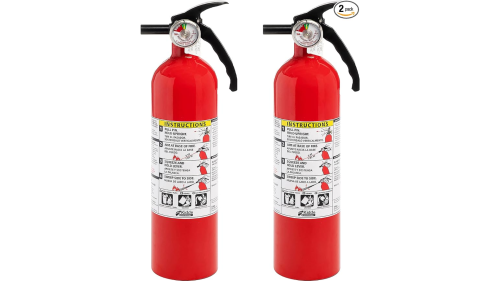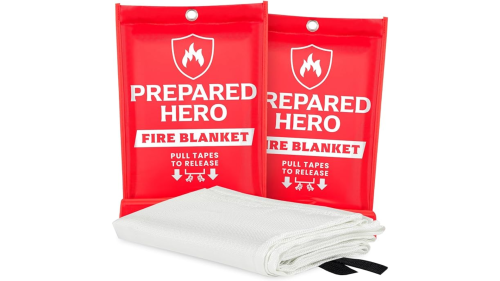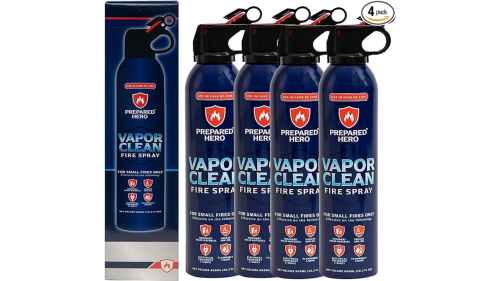The first fire extinguisher was patented by chemist Ambrose Godfrey in 1723. Since then, many types of extinguishers have been invented, altered and developed.
But one thing remains the same no matter the era — four elements must be present for a fire to exist. These elements include oxygen, heat, fuel and a chemical reaction. When you remove one of the four elements in the “fire triangle,” the fire can then be extinguished.
However, in order to successfully extinguish a fire, you must use the correct extinguisher.
The most common types of fire extinguishers used on different types of fire fuels are:
- Water fire extinguisher: Water fire extinguishers douse fires by taking away the heat element of the fire triangle. They’re used for Class A fires only.
- Dry chemical fire extinguisher: Dry chemical extinguishers extinguish the fire by interrupting the chemical reaction of the fire triangle. They’re most effective on Class A, B and C fires.
- CO2 fire extinguisher: Carbon dioxide extinguishers take away the oxygen element of the fire triangle. They also remove the heat with a cold discharge. They can be used on Class B and C fires.
And because all fires are fueled differently, there’s a variety of extinguishers based on the fire type. Some extinguishers can be used on more than one class of fire, while others warn against the use of specific class extinguishers.
Here’s a breakdown of fire extinguishers classified by type:
| Fire extinguishers classified by type: | What the fire extinguishers are used for: |
|---|---|
| Class A fire extinguisher | These extinguishers are used for fires involving ordinary combustibles, such as wood, paper, cloth, trash and plastics. |
| Class B fire extinguisher | These extinguishers are used for fires involving flammable liquids, such as grease, gasoline and oil. |
| Class C fire extinguisher | These extinguishers are used for fires involving electrical equipment, such as motors, transformers and appliances. |
| Class D fire extinguisher | These extinguishers are used for fires involving combustible metals, such as potassium, sodium, aluminum and magnesium. |
| Class K fire extinguisher | These extinguishers are used for fires involving cooking oils and greases, such as animal and vegetable fats. |
It’s important to remember that each fire requires a different extinguisher based on the circumstances.
PASS fire acronym
And if you’re going to use an extinguisher, just remember PASS: pull the pin, aim the nozzle or hose at the base of the fire, squeeze the operating level to discharge the extinguishing agent and sweep the nozzle or hose from side to side until the fire is out.
This article, originally published Jan. 3, 2017, has been updated with current information.






